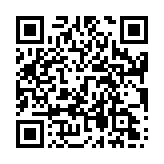Epilogue – The Beginning Is The End
… Wherein yours truly finds himself right back at that lunch with friends — me with my Nexus S, my girlfriend with my her Nexus One and the rest of the table, amazingly, with Android devices of their own. This moment marks both the beginning and the end of my mobile phone memoirs.
I hated my first mobile with a passion because I saw no value in having one. Once I got hooked on the non-voice features, however — text messaging first, data later — it was a different story. At the dawn of the new millennium I had no idea of how powerful the lowly cell phone would one day become; my personal device wish-list had but two items:
- An address book that could be synchronized between phone and computer;
- A phone that could travel with me anywhere in the world.
My first wish was granted in the year 2000 courtesy of a plug-in module for a PDA . The next year I trialled my first “world” phone in Hong Kong, and bought another while I was there. But it wasn’t until 2007 and my first 3G handset that I was able to access Japan’s advanced mobile networks with my own device.
Then there was the third thing, a feature I didn’t even know I wanted until I saw it coming. By the summer of 2009 I could foresee a smartphone future that paralleled the present state of desktop computers and Linux — that the hardware would one day become a commodity, freeing its owner to use the operating system of his or her choice. Not two years later I had CyanogenMod on my first Android phone, and an entire universe of other custom ROMs just a download and install away.
The story of mobile phones doesn’t end here, of course. The hardware continues to evolve, not so much by leaps and bounds anymore as the touch-screen “fondleslab” has become the de facto standard. Internal components are faithfully following Moore’s law, getting ever smaller, better and cheaper. There has been a much more disruptive change in the manufacturers who bring the devices to market; the once-mighty Nokia and RIM have had their market share almost entirely usurped — first by Apple and now, it seems, by Samsung.
On the software side Android is widely acknowledged as the world’s dominant mobile phone OS; that the code is freely available to all ensures a healthy and diverse ecosystem of the aforementioned custom ROMs. But there are new players on the horizon: Firefox is set to release its own mobile OS in the very near future, and some ex-engineers from Nokia have vowed to continue the legacy of the Linux-based Maemo and MeeGo with a new startup called Jolla.
At some point down the road history might allow for a second edition of this book. For now, I can only marvel at the progress I’ve seen. Perhaps the most cherished sign of how far we’ve come is that people in public spaces are generally spending less time shouting into their mobiles and more time quietly interacting with them.
I’ll leave you with a final memory: At South by Southwest in 2011 I attended a movie première at Austin’s historic twelve hundred-seat Paramount Theatre, so packed that I could only get a seat in the last row of the balcony. The film was entirely forgettable, but I’ll always remember what I saw as the end credits began to roll. The huge auditorium in front of me was suddenly lit with the sparkle of a thousand tiny screens, silently reaching out to each other and the world beyond.
For this unabashed mobile phone geek it was a little bit like heaven.



A delightful image for your closing thought.
I developed an app for Palm in 2000 for my animation festival. At the end of every screening, the few Palm users in the Bloor Cinema would light up their screens and tap their way to artist bios, queuing up messages to be sent when they returned home to sync their devices.
Something about cinema and handheld that is a perfect fit.
I’ve really enjoyed your memoirs on mobile. Congratulations on this ambitious project!
Thanks, good sir!
Out of interest (and if applicable), what’s your e-reader of choice?